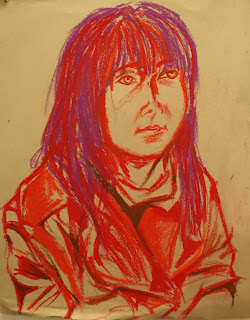- Move away from artists' influence and start developing own style
- Start thinking about storyboard layout and story
- Rough draft of drawings first before working on the final outcome, which will be a series of illustrations put together with a bit of text (?)
2nd Week 5th April
- Start to think about scale (decide whether it would simply be traditional or whether it is possible to scan it onto the computer and work from there)
- Decide on what materials to use. (Mostly inks and watercolours, but what else?)
- Start to carry out ideas, techniques and original style that have been developed and working towards a final outcome.
.




.jpg)

.jpg)


.jpg)

.jpg)















